If you’ve already looked at the previous post, Jeanne Fouillon and her beautiful harp, then you’ve already seen the portrait above. When I put that post together last week, I hadn’t yet tried to identify the dignified gentleman with the harp. It seemed like a long shot, but one that might be worth a try. I started reading about prominent harpists in London around 1870, then looked for portraits to go along with names. Britain’s National Portrait Gallery proved to be the best source for images. In less than an hour, I found a portrait there of a younger man with almost exactly the same expression as the man in my photograph.
The National Portrait Gallery owns two photographs of harpist and composer John Balsir Chatterton (1804-1871). They were taken during a sitting in 1862 at the London studio of prominent French photographer Camille Silvy. The one you should see is here. After you click the link, you can zoom in to see his facial features. In my photo he’s roughly eight years older, but he has the same eyes and mouth.
John Balsir Chatterton studied harp in London under Nicolas-Charles Bochsa, who helped found the Royal Academy of Music in 1822. When Bochsa was forced to resign his professorship in 1827 because of legal problems in his native France, Chatterton took over his position at the Academy. Chatterton would teach there many years, and in 1842 would be appointed harpist to Queen Victoria (who was only 23). Chatterton’s students would include the Welshman John Thomas (1826-1913), who would go on to receive the bardic name Pencerdd Gwalia (Chief of the Welsh minstrels) in 1861.
John Balsir Chatterton performed at the royal wedding of Princess Louise on March 21, 1871. He died less than three weeks later, after a two-day illness, on April 9, 1871.
In the carte-de-visite above, I believe he’s posing with an Érard Gothic double-action pedal harp, patented in London in 1836 by Pierre-Orphée Érard (1794-1855).
The photograph was taken around 1870 at the London studio of George and Rebecca Lavis, who were husband and wife. Their first studio was in Eastbourne, Sussex. George died in 1875, when he was about 43 years old, at which point Rebecca seems to have retired from commercial photography. According to census records, she was about 46 at the time.



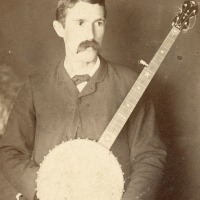
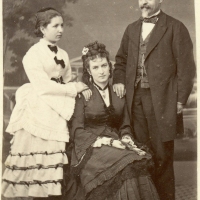
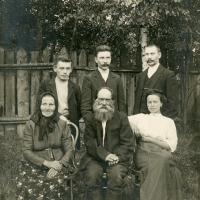
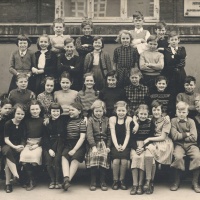
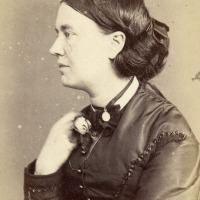
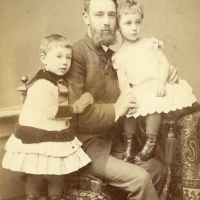
It’s great that you were able to identify him! He’s definitely the same man pictured on the National Photo Gallery.
LikeLiked by 2 people
Thank you! You know how exciting it is to solve a photographic mystery! 🙂
LikeLiked by 1 person
Even though I’m not good at recognising people in comparisons I would say that it definitely is the same man. And well done for the excellent research! (You’ve been busy!)
LikeLiked by 2 people
Thank you! Yes, I’ve been quite obsessed with Victorian harps and harpists for the past few days!
LikeLiked by 2 people
Well done! You even identified the kind of harp! Very impressive detective work, Mr. Holmes. And isn’t it just awesome that John Thomas got to have a bardic title!
LikeLiked by 1 person
You understand the significance of a bardic title much better than I, Carol, but it sounds very impressive! I just realized that John Thomas was appointed harpist to Queen Victoria in 1872, and of course that was because of the death of John Chatterton in 1871. I hadn’t paid attention to the dates before.
Fun fact: in the 1820s, the most popular instrument at the Royal Academy was the harp!
LikeLike
What a cool resource the national portrait gallery is! And what a fine prop a harp is in a photograph. I saw someone mention that these harp photo cards might have been used as a sort of business card. You often mention the word carte-de-visite: could you explain a bit about these cards and how they were used, beyond what your average Downton Abbey fan such as myself might know? Sorry if i have missed an earlier post on the subject.
LikeLiked by 1 person
Andrea, here’s what I think is important about them. CDVs became popular in Europe and then the rest of the world beginning about 1859, although they were first made in Paris in 1854. Unlike daguerreotypes and ambrotypes, which were expensive and unique, CDVs could be produced from a negative in any quantity desired, and at relatively low cost. This made them ideal to exchange with friends and relatives. Their compact size and light weight made them easy to carry. Online references will sometimes say that they were replaced by larger cabinet cards in the 1870s, but that’s only partly true. Cabinet cards did become popular, but the CDV format also remained popular for many decades. I have examples on the blog from as late as 1914. People have collected and admired them for more than 150 years, and there’s something about their compactness that’s particularly appealing.
LikeLiked by 3 people
I’m having a quiet sulk as the National Portrait Gallery’s website appears to be down. Ive tried all ways I can think of to get in to see the reference phtos to no avail. Grrr. I will try again later. I hope I’ll remember!
Fascinating insight into the past, once again. Thank you!
LikeLiked by 1 person
Finally it worked! Yes, it is definitely the same man. Well done on working this out! Strange that he is posing with what appears to be a bookbinders press.
LikeLiked by 1 person
Good observation! I wasn’t sure what kind of press that was. Silvy had a number of unusual props which customers could choose from. Chatterton may have chosen the press because he was composing music at the time.
LikeLiked by 1 person
Boy, you really did find out a lot about him!
LikeLiked by 1 person
Well done with the identification! I love the NPG website – it’s such a great resource and I can spend hours looking through the images!
LikeLiked by 1 person
Thank you! I’ve spent more time on your NPG website than on ours!
LikeLiked by 1 person
I love the casual pose: I play the harp, but I’m just an ordinary guy!
LikeLiked by 2 people
Heh heh 🙂
LikeLike
Nice object to lean on!
LikeLiked by 1 person
Absolutely!
LikeLiked by 1 person